Health Optimization and Adaptogens – An Effective Strategy Against Pathogens
In general, I am astonished by how little attention is placed on the value and importance of good health in our society. In the face of the current pandemic, with underlying co-morbidities present in an estimated 60% of the population, increasing the risk of death from complications, there is an even greater urgency to educate our communities and urge our citizens to adopt the key components to optimal health. For example, there is now a clear association between diabetes and increased mortality and severity in COVID-19 pneumonia, and ocular symptoms of severe acute respiratory syndrome coronavirus 2 (SARS‐CoV‐2).[1] These and many other underlying conditions can be successfully managed by applying the fundamental building blocks to optimal health and wellness, which include nutrition, botanical medicine, lifestyle, and diet. The more robust our health at the molecular, cellular, and organ system levels, the better equipped we are to resist and recover from disease.
Now more than ever, we need more sunshine, fresh air, clean water, and to nourish our cells with powerful phytonutrients that strengthen our ability to adapt and thrive as we are exposed to stress, toxins, and virulent pathogens in our environment. Did you know that being outside, getting sunshine, and breathing fresh air (particularly humid air) is one of the best medicines against acute respiratory viruses? Being in a hospital on a respirator, as much as it may be a necessity for some, is far from creating an optimal environment for healing. Speaking of fresh air, did you know that our environment is cleaning up like never imagined because of COVID-19? Yes! It’s true. Los Angeles, which normally has some of the poorest air quality in the world, now has clean air, and on April 21st, 2020, it saw some of the cleanest air of any major city in the world, according to IQAir, a Swiss air quality technology company which also monitors pollution levels in cities around the globe.[2] Who would have ever thought this was possible?
LA (Jan) before CoV-19 LA April 21, 2020

Recent research highlights the importance of the environmental factors, especially temperature and humidity, in modulating host intrinsic, innate, and adaptive immune responses to viral infections in the respiratory tract.[3]
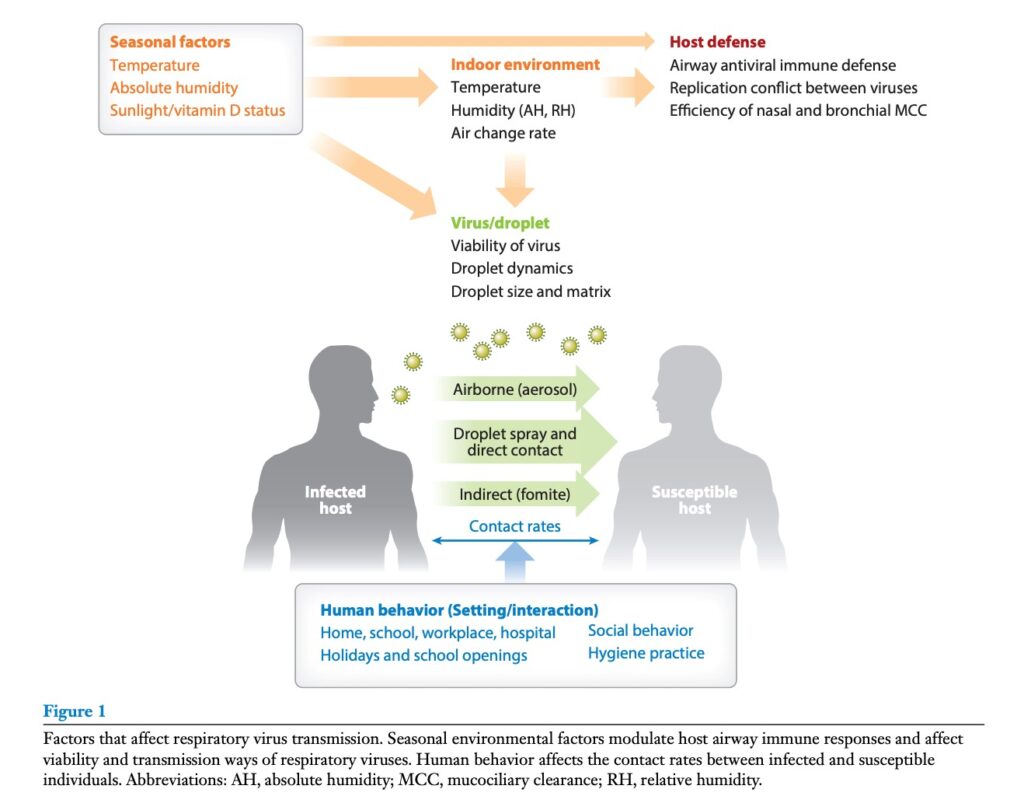
3
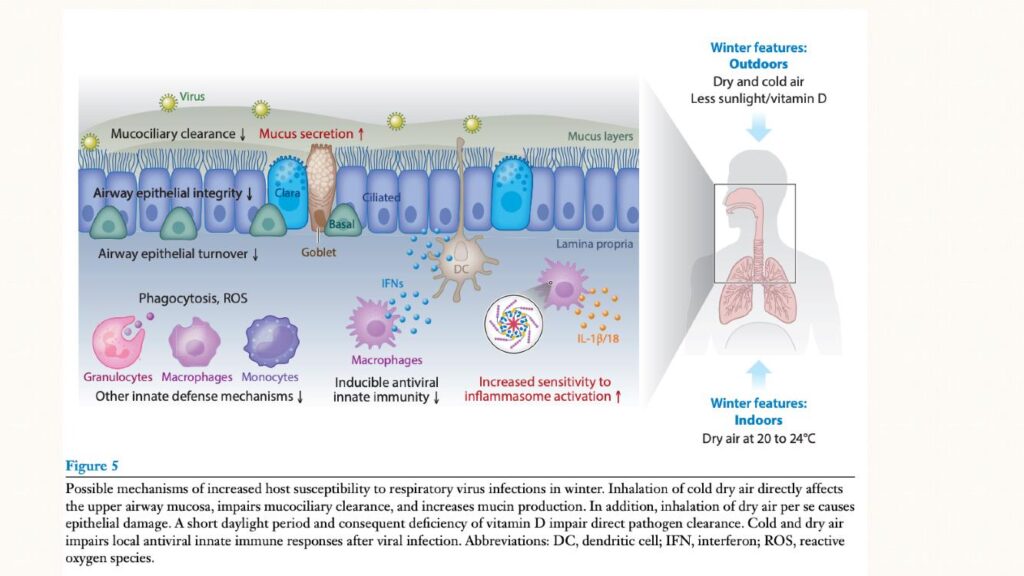
3
There are marked variations in mortality from COVID-19 between different countries. It is becoming clear that countries in the Southern Hemisphere are seeing a relatively low mortality.
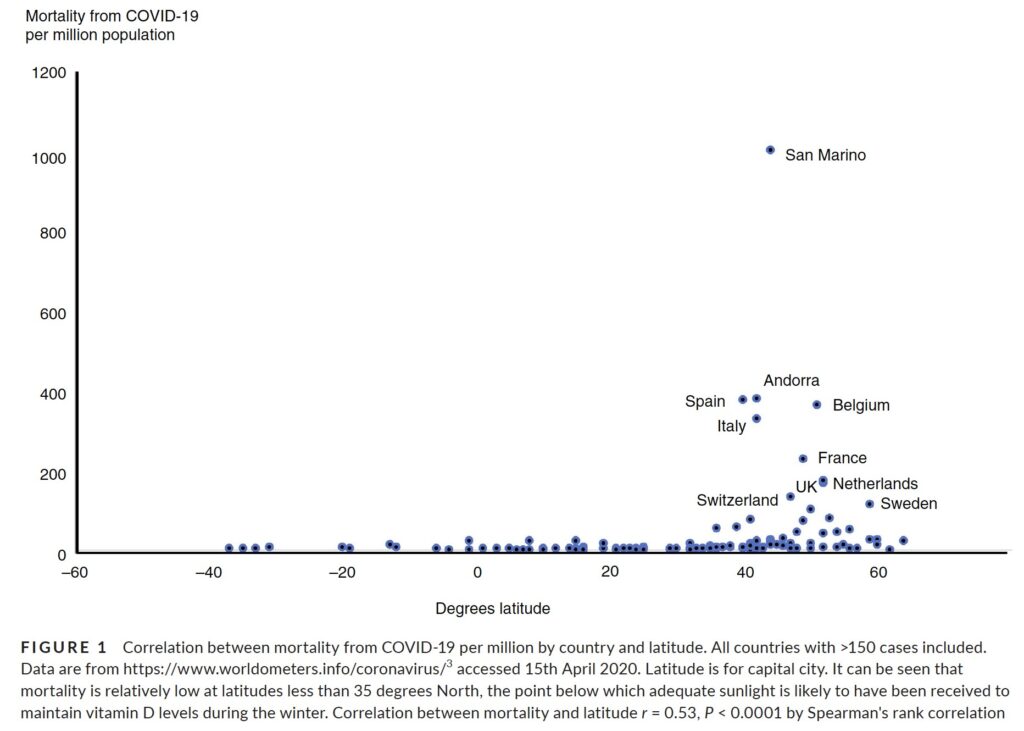
At the most basic level, we can make a big difference in our health by simply getting outdoors, getting sunshine, and breathing fresh air. I suggest walking in the morning on cool, moist grass, or on stones, for a few minutes, doing some deep breathing, and reflective prayer. One of the most revered nature doctors who greatly influenced my work was Sebastian Kneipp, a Bavarian Catholic priest and one of the forefathers of the naturopathic medicine movement. His book My Water Cure was published in 1886 with many subsequent editions and translated into many languages and is not only the best book ever written on hydrotherapy, but it is an excellent book on herbal medicine. Kneipp expanded the understanding of health to include a more holistic view which included mental, social, and spiritual aspects.[5]

With stress and unhealthy lifestyles now the norm, chronic health conditions are becoming more and more prevalent. These types of conditions are not effectively treated with medication. Instead of looking for a solution to our illness or conditions long after they begin, we should first focus on health optimization and preservation early in life.
Opposite to the term pathogenesis, it the term salutogenesis. Salutogenesis examines how people stay well when encountering various stressors. In other words, it focuses on the coping mechanisms that might preserve health, despite stressful conditions. This provides insight into why some individuals manage to avoid illness in spite of being exposed to identical stressors as those getting sick. [6],[7]
Therefore, when managing disease or pathogens, it is imperative to strengthen the Life force, which is the supreme “curative power”, which is inherently resistive and eliminative in nature in response to invasion and threat – pathogenic, trauma and otherwise.
The pathogenic-chemical philosophy endeavors to frame a pathogen-chemical cause to our disease by which the only path for prevention is a vaccine, and the only treatment is a drug. This approach assumes that the functional activities of the organism are solely due to pathogenic chemical infiltration and disintegration of the tissues, and on this false premise, it reasons that medicines should act on killing the pathogen. This gives a functional result, discovered in a test tube, as if all we should do is look for the compound that can kill the virus and everyone should be treated the same without ever considering the overall health and terrain of the host (person) and the multitude of factors that influence health and disease within a wholistic framework.
The Nervous System and Immune System Connection
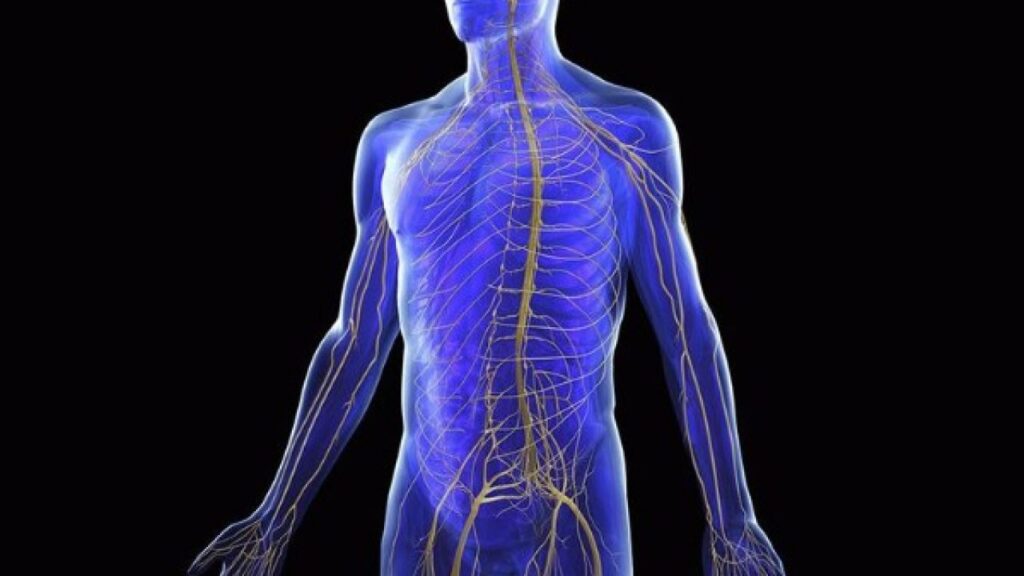
More specifically, disruption in the normal function of the adrenal glands is under the direct control of damaged nerve tissue, and prolonged activation of stress hormones can lead to a dramatic decrease in the numbers of many immune cells, particularly affecting the precursors of T-cells and B-cells. In some cases, this resulted in a reduction of between 50 and 80 percent in the size of the spleen, thymus or lymph nodes.[8]
This two-stage pathological reflex arc consists of nerve pathways between the spinal cord and the adrenal glands, as well as a hormone-mediated link with the immune system.
The process of sickness or disease is dependent upon the will of the Life force to eliminate pathogens and to restore normal balance of the body. Modern medicine either ignores and often even suppresses the actions of the Life force, such as suppressing a fever during an acute illness.
I am a believer in the Evolutionary (Darwinian) theory of medicine, which predicts that once an individual reaches an age of sufficiently low Darwinian fitness, (s)he will have reduced chances of keeping disease(s) in check.[9]
The central precept of Evolutionary medicine is that vulnerability to major diseases arises, at least in part, as a consequence of the ‘design’ limitations, compromises and trade-offs that characterize evolutionary processes.[10]
My approach is to focus on health optimization in a unified way by using botanical, nutritional, dietary, and life-style medicine, and fit into this system when called upon, modern medicine such as a pharmaceutical drug, and place it within the wholistic framework. By utilizing this approach, one has the ability to go beyond simply improving upon a normal state of health to building reserves. In addition to the daily amount of kinetic energy expenditure required to meet usual demands, the body has a large capacity to store energy reserves so that in a healthy state, the body is capable of an immense amount of work, compared with the amount of functional energy ordinarily required for basic health maintenance.
Any definition of health must necessarily include both the kinetic and potential vitality (reserve energy). Kinetic energy is easy to define because we all know how we feel as it relates to energy, but reserve energy and adaptation are much harder to define and relate to.
A fascinating observation by Robert Sapolsky in the book “Why Zebras Don’t Get Ulcers” that really struck me was how he had been following this group of baboons for 30 years. He writes at one point, many of the baboons died suddenly after eating garbage at a tourist area that had been contaminated with TB. He was devastated but was soon amazed! When he observed which monkeys had died, he discovered it was ALL the ALPHA MALES!!!!
Who remained? Lots of females and the mellow “Good Guys”, as he called them. And the amazing thing? They set up a cooperative, mellow society that has now lasted about 20 years. Everyone gets along – no competition. They spend most of their time hanging out, grooving (I mean grooming one another). When stray young Alpha males wandering from other tribes arrive, they are simply told/educated that “hey, this is what we do, we get along here” and they get into the whole “groove” lifestyle. Robert made an observation that, “these baboons are not simply surviving, they are THRIVING!!!”
Combating Viruses – Herbal Medicine to the Rescue
Healing with medicinal plants is as old as humankind itself. Emerging evidence suggests that hormetic phytochemicals produced by environmentally stressed plants can activate and moderate cellular stress-response mechanisms at a subtoxic level in humans, which may enhance tolerance against severe dysfunction or disease. Plants respond to viruses using elaborate networks of genetic interactions. Viruses employ an array of elaborate strategies to overcome plant defense mechanisms and must adapt to the requirements of the host translational systems. Plants also induce hypersensitive and systemic acquired resistance responses, which together, limit the virus to infected cells and impart resistance to the noninfected tissues.[11]
A class of herbs called Adaptogens are the pillars of supportive care, for they nourish the root system of our health, as well as the branches. They are network medicine in that they support all the organs systems, cells, and even the molecules of our body. Adaptogens build energy reserve and extend the dynamic range of healthy stability. They work to vitalize and normalize and are non-specific to any one organ system, having an overall beneficial effect.
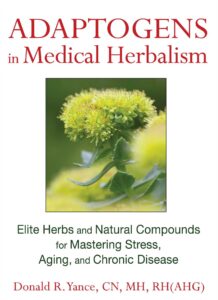
The pharmacology of adaptogens is a typical example of network pharmacology. Network pharmacology has the potential to provide treatments for complex diseases, chronic conditions, and syndromes, inclusive of their pathophysiologic evolution, where conventional approaches have often been disappointing.[12],[13],[14],[15],[16]
Pleiotropic natural compounds from plants are one of the most promising strategies due to their multi-targeting abilities and low to no side effects.[17] Numerous molecular network interactions (with feedback regulation of the neuroendocrine and immune systems) contribute to the overall pharmacological response.[18] There is an almost endless amount of interaction between the bioactive compounds within any single herb and then the additional complex interactions of multiple herbal extracts and the targets they effect, and the interaction between various targets, and then the often paradoxal (normalizing and non-specific) effects they may express according to the situation or environment they are interacting with at any given moment. It is music, art and science and it is alive and communitive with the Life force.
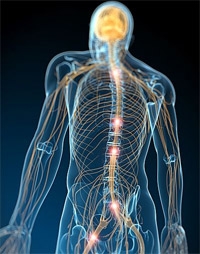
The term “Adaptogen” was first conceived in the late 1940s by a scientist from the former Soviet Union named Dr. Nikolai Lazarev. Dr. Lazarev was a well-known pioneer in the field of preventative medicine. His work centered on ancient medical traditions and a specific group of traditional Chinese Medicines (TCM) that were used to effectively increase physical and mental capacity, reduce fatigue, improve resistance to disease and promote long life. He described Panax ginseng, Schisandra chinensis and other herbs by defining them as “plant-originated adaptogens that can non-specifically enhance the human body”. In 1948 Dr. Lazarev and his protégé, Dr. Israel Brekhman, undertook the challenge of researching the utility and effectiveness of the group of plants that Dr. Lazarev coined as “Adaptogens” in 1962.[19]
According to the primary definition of adaptogens, these substances must meet three criteria: first, adaptogens must be non-specific and must assist the human body in resisting a wide range of adverse conditions, such as physical, chemical or biological stress. These may include environmental pollution, climate change, radiation, infectious diseases, and interpersonal disharmony. Second, adaptogens must maintain allostasis in humans, expand the dynamic range of healthy stability, that is, these substances can offset or resist physical disorders caused by external stress. Third, adaptogens must not harm the normal functions of the human body.[20]
In the 1990s, a group of scientists comprising Hildebert Wagner, George Wikman and Alexander Panossian performed many studies on adaptogens and proposed the following more expanded definition: adaptogens are natural bioregulators that increase the ability to adapt to environmental factors and avoid the damage caused by those factors. In fact, the advantage of adaptogens are that they minimize the bodily response to stress, reducing the negative reactions during the alarm phase and eliminating, or at least decreasing, the onset of the exhaustion phase that is part of the so-called general adaptation syndrome.21
When the body is working close to its maximum capacity as a result of stress, the whole organism is engaged. If the strain lasts for a longer duration, or is repeated, the cells must adapt to work at a higher level and the capacity to manufacture cell fuel must be built up.
- Specifically, adaptogenic substances increase the capacity of the cells to build “energy factories” by activating certain “workers,” including mRNA (messengers) and tRNA (transporters), and the mitochondria. Adaptogens also act as powerful redox/antioxidants and assist in scavenging free radicals, which adversely affects all cellular activities.
- By normalizing our bodily responses, adaptogens help maintain the stable internal environment known as homeostasis and more importantly, allostasis. In order for our body parts to work efficiently, the concentrations of water, food substances, and oxygen (as well as the conditions of heat and pressure) must remain within certain very narrow limits. By helping body parts remain in balance, adaptogens can help us have more energy and much greater health.
- Combinations of this class of plant-based medicines have been perfected and prescribed to elite athletes by Russian and German sports physicians in order to continually assist them in anabolic activity, replenishing the depleted organism, suppressed immune systems, and psychological reserves that result from the hard training necessary to reach elite levels.
- Adaptogens modulate inflammatory and growth factors of pro-inflammatory cytokines (e.g. tumor necrosis factor and interleukin-1beta) and pro-inflammatory enzymes that mediate the production of prostaglandins (e.g. cyclooxygenase-2) and leukotrienes (e.g. lipooxygenase), together with the expression of adhesion molecules and matrix metalloproteinases.21
Adaptogens are not vitamins, nor are they isolated constituents of a plant. They are safe, unique whole-plant extracts that work at the cellular level to help the body overcome the harmful side effects of stress. They increase the health and vitality of the cells, thus increasing the health and vitality of the entire organism.
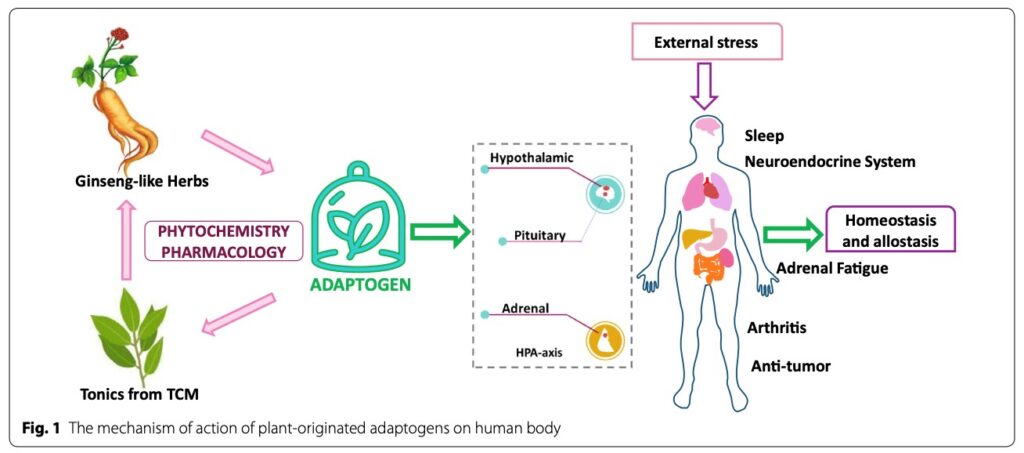
5
Adaptogens are metabolic regulators, which increase the ability of an organism to adapt to environmental factors and to avoid damage from such factors. Adaptogens enhance immune surveillance. Adaptogenic compounds affect key mediators of the adaptive stress response at intracellular and extracellular levels of communication
Ginsenosides regulate a multitude of cellular stress-response pathways against various dysfunctions or diseases.
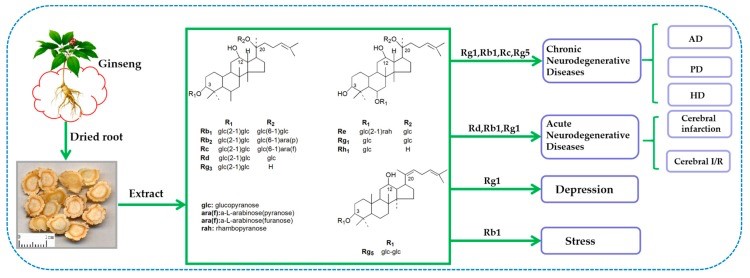
Ginseng (red) and Vitamin C increased immune cell activity and decreased lung inflammation induced by Influenza H1N1 Infection.[22]
Adaptogens build immunity as well as increase endurance and strength, improve mental focus, speed recovery, and enhance athletic and work performance. Adaptogen remedies have been shown to ameliorate immune dysfunction by altering corticosterone levels in situations when the elevation of corticosterone is harmful.[23] Adaptogens can activate macrophages, T-lymphocytes, and NK cells.[24],[25],[26],[27]
Some adaptogen remedies act directly by stimulating macrophages and lymphocytes, reversing immunosuppression caused by stress.[28] Thus, it is not always clear how a plant remedy is ameliorating immune dysregulation. In further studies of adaptogens it seems important to view them as working to enhance the HPA axis, which is what separates them from many other herbal remedies.
Some plant remedies, such as astragalus, are not primary adaptogens, yet have immunotonic, immune-enhancing, and/or immunomodulating properties. Astragalus, a secondary adaptogen that is considered a primary spleen tonic in TCM, for example, can stimulate many aspects of immune response,[29] but does not increase resistance to a wide variety of stressors (e.g., psychological stress). However, substantial evidence does exist that demonstrates astragalus and/or astragalus-based compounds, exhibit inhibitory activity against a variety of respiratory diseases because of their effective biological functions.[30] For example, intake of astragalus alone or in combination with other herbs has shown to effectively enhance the immune function and prevent upper respiratory tract infection in children.[31] Astragalus is one of the main herbs used in fu-zheng therapy to enhance the immune system during chemo and radiotherapy.[32],[33],[34],[35],[36] Chinese investigators have researched the immune-enhancing effects of astragalus for the past 30 years. It has demonstrated a repeated ability to enhance NK cells, induce IL-2 and interferon production.[37]
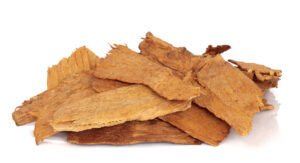
In Russia, adaptogens have been used for the prevention of respiratory ailments with great success, reducing the incidence by 50%.[38] These studies usually involve thousands of people, using a single adaptogen, such as Eleuthero, daily and often, for several years.
Similar to TCM, I combine herbs into formulation, because I believe not a single herb, but the combination of herbs is more beneficial. One study on an adaptogenic formula of Rhodiola rosea L., Schisandra chinensis, and Eleutherococcus senticosus was shown to reduce the severity of acute viral pneumonia. A double-blind, placebo-controlled, randomized phase III study (60 patients in total over 2-week period) of an Adaptogenic formula consisting of extracts of Rhodiola rosea L., Schisandra chinensis, and Acanthopanax (Eleutherococcus) senticosus, was carried out on two parallel groups of patients suffering from acute viral pneumonia. The adaptogenic formula produced a significant effect on the recovery of patients by decreasing the duration of the acute phase of the illness, by increasing mental performance of patients in the rehabilitation period, and by improving their quality-of-life.[39]
The most researched primary adaptogens are Withania somnifera, Panax ginseng, Panax quniquefolius, Schisandra chinensis, Acanthopanax senticosus (known as Eleuthro), Rhodiola rosea, and Rhaponticum carthamoides, and Panax Notoginseng.
There is much overlap between these adaptogenic herbal medicines and many TCM tonics. In TCM, it is believed that harmony and balance are indispensable for health and the concepts of yin and yang are used to diagnose and cure disease.[40] According to the terminology used in TCM, the mechanism of action of plant-originated adaptogens is to achieve equilibrium in both yin and yang, showing great vitality.
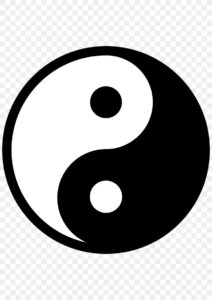
Using TCM to prevent epidemics of infectious diseases has been traced back to ancient Chinese practice cited in Huangdi’s Internal Classic (Huang Di Nei Jing) where preventive effects were recorded. There were three studies using TCM for prevention of SARS and four studies for H1N1 influenza. None of the participants who took TCM contracted SARS in the three studies. The infection rate of H1N1 influenza in the TCM group was significantly lower than the non-TCM group (relative risk 0.36, 95% confidence interval 0.24-0.52; n=4). In March of 2020, there was a study on the use of TCM as a preventive measure against COVID-19.
For prevention of COVID-19, 23 provinces in China issued TCM programs. The main principles of TCM use were to tonify qi (Vital Force) to protect from external pathogens, disperse wind and discharge heat, and resolve dampness. The most frequently used herbs included Radix astragali (Astragalus), Radix glycyrrhizae (Licorice), Rhizoma Atractylodis Macrocephalae (Atractylodes), Lonicerae Japonicae Flos (Honeysuckle), and Fructus forsythia (Forsythia).
Based on historical records and human evidence of SARS and H1N1 influenza prevention, TCM herbal formulations could be an effective approach for prevention of COVID-19, especially in high-risk populations.[41]
If COVID-19
teaches us anything, it is the need we have for a new paradigm in preventive medicine.
[1] Nan Hong et. al., Evaluation of ocular symptoms and tropism of SARS‐CoV‐2 in patients confirmed with COVID‐19, First published:26 April 2020, https://doi.org/10.1111/aos.14445, Diabetes & Metabolic Syndrome: Clinical Research & Reviews, Acta Ophthalmologica https://www.sciencedirect.com/science/article/pii/S1871402120300837
[2] https://www.cnn.com/2020/04/07/us/los-angeles-pollution-clean-air-coronavirus-trnd/index.html, retrieved April 22, 2020
[3] Moriyama M, Hugentobler WJ, Iwasaki A. Seasonality of Respiratory Viral Infections
. Annu Rev Virol. 2020;10.1146/annurev-vrology-012420-022445. doi:10.1146/annurev-virology-012420-022445
[4] Jonathan M. Rhodes, Sreedhar Subramanian,, Eamon Laird, Rose A. Kenny, Editorial: low population mortality from COVID-19 in countries south of latitude 35 degrees North supports vitamin D as a factor determining severity, Aliment Pharmacol Ther. 2020;00:1–4.,
[5] Locher, Cornelia; Pforr, Christof (2014). “The Legacy of Sebastian Kneipp: Linking Wellness, Naturopathic, and Allopathic Medicine”. The Journal of Alternative and Complementary Medicine. 20 (7): 521–526. doi:10.1089/acm.2013.0423
[6] Heim E. Salutogenese versus Pathogenese–ein neuer Zugang zu einer alten Weisheit [Salutogenesis versus pathogenesis–a new approach to an old wisdom]. Schweiz Med Wochenschr. 1994;124(29):1267–1275.
[7] d’Alessio PA. Salutogenesis and beyond. Dermatol Ther. 2019;32(1):e12783. doi:10.1111/dth.12783
[8] Prüss H, Tedeschi A, Thiriot A, et al. Spinal cord injury-induced immunodeficiency is mediated by a sympathetic-neuroendocrine adrenal reflex. Nat Neurosci. 2017;20(11):1549–1559. doi:10.1038/nn.4643
[9] Komarova, N. L. & Wodarz, D. Evolutionary dynamics of mutator phenotypes in cancer: implications for chemotherapy. Cancer Res.63, 6635–6642 (2003).
[10] Michael E Hochberg,Frédéric Thomas, Eric Assenat, and Urszula Hibner, Preventive Evolutionary Medicine of Cancers, Evol Appl. 2013 Jan; 6(1): 134–143.
[11] Kranthi K. Mandadi and Karen-Beth G. Scholthof, Plant Immune Responses Against Viruses:
How Does a Virus Cause Disease?The Plant Cell May 2013, 25 (5) 1489-1505;
DOI: https://doi.org/10.1105/tpc.113.111658.
[12] Hopkins, A.L. 2008. Network pharmacology: the next paradigm in drug discovery. Nat. Chem. Biol. 4: 682–690.
[13] VanRegenmortel,M.H. 2004.Reductionism and complexity in molecular biology. Scientists nowhave the tools to unravel biological and overcome the limitations of reductionism. EMBO Rep. 5: 1016–1020.
[14] Cho, C.R., M. Labow, M. Reinhardt, et al. 2006.The application of systems biology to drug discovery. Curr. Opin. Chem. Biol. 10: 294–302.
[15] Fliri, A.F.,W.T. Loging&R.A.Volkmann. 2010. Cause–effect relationships in medicine: a protein network perspective. Trends Pharmacol. Sci. 31: 547–555.
[16] Efferth, T. & E. Koch. 2011. Complex interactions between phytochemicals. The multi-target therapeutic concept of phytotherapy. Curr. Drug Targets 12: 122–132.
[17] Poornima P, Kumar JD, Zhao Q, Blunder M, Efferth T. Network pharmacology of cancer: From understanding of complex interactomes to the design of multi-target specific therapeutics from nature. Pharmacol Res. 2016;111:290–302. doi:10.1016/j.phrs.2016.06.018
[18] Panossian, A., R. Hamm, G. Wikman, et al. 2013. Synergy and antagonism of active constituents of ADAPT-232 on transcriptional level of metabolic regulation in isolated neuroglia cells. Front. Neurosci. 7: 16.
[19] Brekhman, I.I., I.V. Dardymov. New Substances of Plant Origin which Increase Nonspecific Resistance. Annual Review of Pharmacology, v.9.1969,
[20] Liao LY, He YF, Li L, et al. A preliminary review of studies on adaptogens: comparison of their bioactivity in TCM with that of ginseng-like herbs used worldwide. Chin Med. 2018;13:57. Published 2018 Nov 16. doi:10.1186/s13020-018-0214-9
[21] Ann. N.Y. Acad. Sci. 1401 (2017) 49–64 C 2017 Panossian, A., G. Wikman & H. Wagner. 1999. Plant adaptogens. III. Earlier and more recent aspects and concepts on their mode of action. Phytomedicine 6: 287–300.
[22] HY Qi et al. Med Res Rev 38 (2), 625-654. Mar 2018. PMID 28586505. Zhongguo Zhong Yao Za Zhi, 38 (19), 3388-94 Oct 2013, J Pharm Pharmacol. 2016;68(3):406–420. doi:10.1111/jphp.12529
[23] Kim, Y.-R., S.-Y. Lee, et al. (1999). “Panax ginseng blocks morphine-induced thymic apoptosis by lowering plasma corticosterone levels in a situation that the elevated steroid hormone is doing harm, thus reducing the damage caused by excess cortisol.” General Pharmacology 32: (647-652).
[24] Winters M. Ancient medicine, modern use: Withania somnifera and its potential role in integrative oncology. Altern Med Rev. 2006;11:4.
[25] Patel S, Rauf A. Adaptogenic herb ginseng (Panax) as medical food: status quo and future prospects. Biomed Pharmacother. 2017;85:120–7.
[26] Kaur P, Makanjuola VO, Arora R, Singh B, Arora S. Immunopotentiating significance of conventionally used plant adaptogens as modulators in biochemical and molecular signalling pathways in cell mediated
processes. Biomed Pharmacother. 2017;95:1815–29.
[27] Loo WT, Jin L, Chow LW, Cheung MN, Wang M. Rhodiola algida improves chemotherapy-induced oral mucositis in breast cancer patients. Expert Opin Invest Drugs. 2010;19(sup1):S91–100.
[29] Wang RT, Shan BE, Li QX Extracorporeal experimental study on immuno-modulatory activity of Astragalus memhranaceus extract, Zhongguo Zhong Xi Yi Jie He Za Zhi 2002 Jun;22(6):453-6. Department of Immunology, Institute of Basic Medicine, Hebei Medical University, Shijiazhuang 050017
[30] Guo Z, Lou Y, Kong M, Luo Q, Liu Z, Wu J. A Systematic Review of Phytochemistry, Pharmacology and Pharmacokinetics on Astragali Radix: Implications for Astragali Radix as a Personalized Medicine. Int J Mol Sci. 2019;20(6):1463. Published 2019 Mar 22. doi:10.3390/ijms20061463
[31] Su G, Chen X, Liu Z, Yang L, Zhang, Stålsby Lundborg C, Wen Z, Guo X, Qin X, Liang J, Liu X. Oral Astragalus (Huang qi) for preventing frequent episodes of acute respiratory tract infection in children.
Cochrane Database Syst Rev. 2016 Dec 1; 12():CD011958.
[32] Duan P, Wang ZM. Clinical study on effect of Astragalus in efficacy enhancing and toxicity reducing of chemotherapy in patients of malignant tumor. Zhongguo Zhong Xi Yi Jie He Za Zhi 2002; 22(7): 515-517.
[33] Zou YH, Liu XM. Effect of astragalus injection combined with chemotherapy on quality of life in patients with advanced non-small cell lung cancer. Zhongguo Zhong Xi Yi Jie He Za Zhi 2003; 23(10): 733-735.
[34] Duan P, Wang ZM. Clinical study on effect of Astragalus in efficacy enhancing and toxicity reducing of chemotherapy in patients of malignant tumor. Zhongguo Zhong Xi Yi Jie He Za Zhi 2002; 22(7): 515-517.
[35] Guo XM, Li JX, Yang XF. Clinical observation on 112 cases with non-Hodgkin’s lymphoma treated by Chinese herbs combined with chemotherapy. Zhongguo Zhong Xi Yi Jie He Za Zhi 1997; 17(6): 325-327.
[36] Taixiang W, Munro A, Guanjian L. Chinese medical herbs for chemotherapy side effects in colorectal cancer patients. Cochrane Database of Systematic Reviews 2005; 25(1): CD004540
[37] Shao BM, Xu W, Dai H, Tu P, Li Z, Gao XM. A study on the immune receptors for polysaccharides from the roots of Astragalus membranaceus, a Chinese medicinal herb. Biochemical and Biophysical Research Communications 2004; 320(4): 1103-1111.
[38] Gagarinova VM, Ostrovskaia SA, Astaf’ev OM, Chistiakova AI, Piskareva NA, Pennikova TA, Alferov VP, Iur’ev VV. [The use of adaptogens of plant origin in protecting children against influenza and other acute respiratory diseases] Pediatriia. 1990;(9):108
[39] Todorov IN, Zaikov GE, Degterev IA. Bioactive Compounds: Biotransformation and Biological Action. Commack: Nova Science Publishers Inc, 1993.
[40] Unschuld PU. Huang Di Nei Jing Su Wen Nature, Knowledge, Imagery in an Ancient Chinese Medical Text: With an Appendix: The Doctrine of the Five Periods and Six Qi in the Huang Di Nei Jing Su Wen. California: Univ of California Press; 2003.
[41] Luo H, Tang QL, Shang YX, et al. Can Chinese Medicine Be Used for Prevention of Corona Virus Disease 2019 (COVID-19)? A Review of Historical Classics, Research Evidence and Current Prevention Programs. Chin J Integr Med. 2020;26(4):243–250. doi:10.1007/s11655-020-3192-6

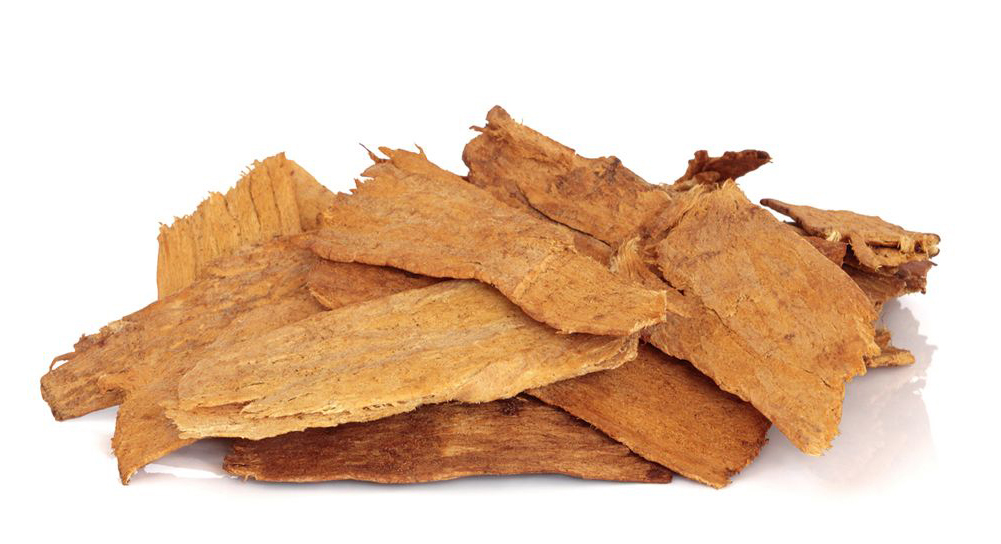
Hi Donnie,
What an interesting and informative read in this New World we find ourselves in! I feel our world was in need of a reset and here it is!
Stay well (Health) n Be well (Mind)
Regards
Keith Murray